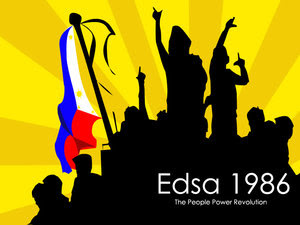You may book an appointment here if you are planning to visit our office.
What happened during the EDSA Revolution?
During those momentous four days of February 1986, millions of Filipinos, along Epifanio de los Santos Avenue (EDSA) in Metro Manila, and in cities all over the country, showed exemplary courage and stood against, and peacefully overthrew, the dictatorial regime of President Ferdinand E. Marcos. More than a defiant show of unity—markedly, against a totalitarian rule that had time and again proven that it would readily use brute force against any and all dissenters—People Power was a reclaiming of liberties long denied. The millions that gathered for the 1986 People Power Revolution—the culmination of a series of public protests, often dispersed if at all given leave—was a nation wresting itself, as one, back from a dictator.
The four-day demonstration along EDSA was a manifestation of the discontent and furies that began with the parliament of the streets during Marcos’ totalitarian rule, as Filipinos began, determinedly, to shake off the subjugation. But, the players of this revolution, at the start, knew only to gather; only in EDSA, at the height of the marches and within the multitude of citizens, did standing as one begin to coalesce as a campaign. From its beginnings as an immediate response to the rigged results of the snap elections, and then as a vigil to guard defecting top military men from Marcos’ vengeful machinations, a show of support heartily encouraged by the Catholic Church; to streets gradually teeming with people to quietly face off with armored tanks, a confrontation of linked arms and prayers and flowers and songs—the four days of EDSA People Power in itself was an exemplar of the evolution of the Philippine protest. [Source]
Here's a Video related to EDSA People Power Revolution



